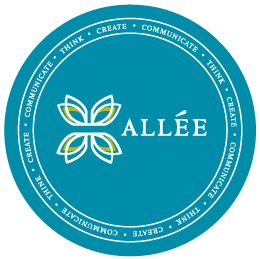Are you interested in what inspires your customers?
You should be.
The amount of daily messages we’re exposed to is overwhelming. Think about what this means for you as a professional looking to deliver a key message. It’s hard work! Take time to really get to know your audience as a way to create last relationships and inspire them to act. As you develop your strategy, think through key communication channels and messaging in a way that is informed by your users. Start with these five message development tips.
1. Get personal
Think about what inspires you. Deadlines? Your children? Being able to meet for happy hour with friends after a long day of work? Whatever it is, you know that it’s easier to keep going when you have a goal, a passion—something driving you. Treat your audience the same way. Make it personal. Lose the hidden agenda and just get to know your audience.
2. Ask
Too often I hear organizations talk about what their customers want but when prompted for statistics that supports those wants, organizations fall short. Stop assuming you know what your audience wants without digging into the facts. Get feedback. Ask questions. Find out if you’re meeting their needs. Use surveys, gather information from your website, converse on social media or use follow-up emails. Be direct with your audience and ask them what they want—they’ll tell you.
3. Set a schedule, yet be flexible
In a perfect world, all of an organization’s messages would go out when appropriate, without complications, and certainly without any noise from the peanut gallery. I’m here to tell you that the days of driving your own agendas and messaging are long gone. Is it helpful to have a plan? Yes. Should you still put together strategies and timelines for when messages will work best? Yes. Should you care what the outside noise and conversation is all about? You bet!
Develop your message strategies with a sense of openness. Anyone who knows me knows that I’m crazy organized and my entire life—business or not—is scheduled. But sometimes things happen that are out of my control that force me to roll with the punches. Be mindful of this as an organization. If you hit a sore spot with your audience or if they’re giving you kudos for something you didn’t think was that big of a deal—roll with it! Join in the conversation and embrace the change. Develop communication strategies that are dynamic and flexible.
4. Listen
Nothing is more frustrating than when I’m talking to someone and immediately after I have finished my sentence (or worse yet, when I’m still in them middle of it), they move on to a completely different topic. The same holds true for your brand. You audience will not be ignored. If they’re giving you feedback, listen. If they’re talking about what it is about your organization they love, dislike or would change, listen. Being too quick to join in the conversation before you have all the details may cause friction. Be respectful and take your turn. And when you’re done listening, let them know they’ve been heard.
5. Evaluate
What happened after you sent your message? Did it make an impact? Did it spark conversation? Was anyone listening? Evaluation is critical to establishing great communication and messaging plans. Work this phase into each of your communication or key messaging strategies in order to keep your brand fresh, engaging and viable.
Inspiring others to take action takes time; they need to trust you in your abilities and in your approach. Think about what it is you want your audience to do and develop a messaging strategy that supports their needs and your goals. Work through the steps above as many times as needed until you develop a rhythm that works for all parties.




